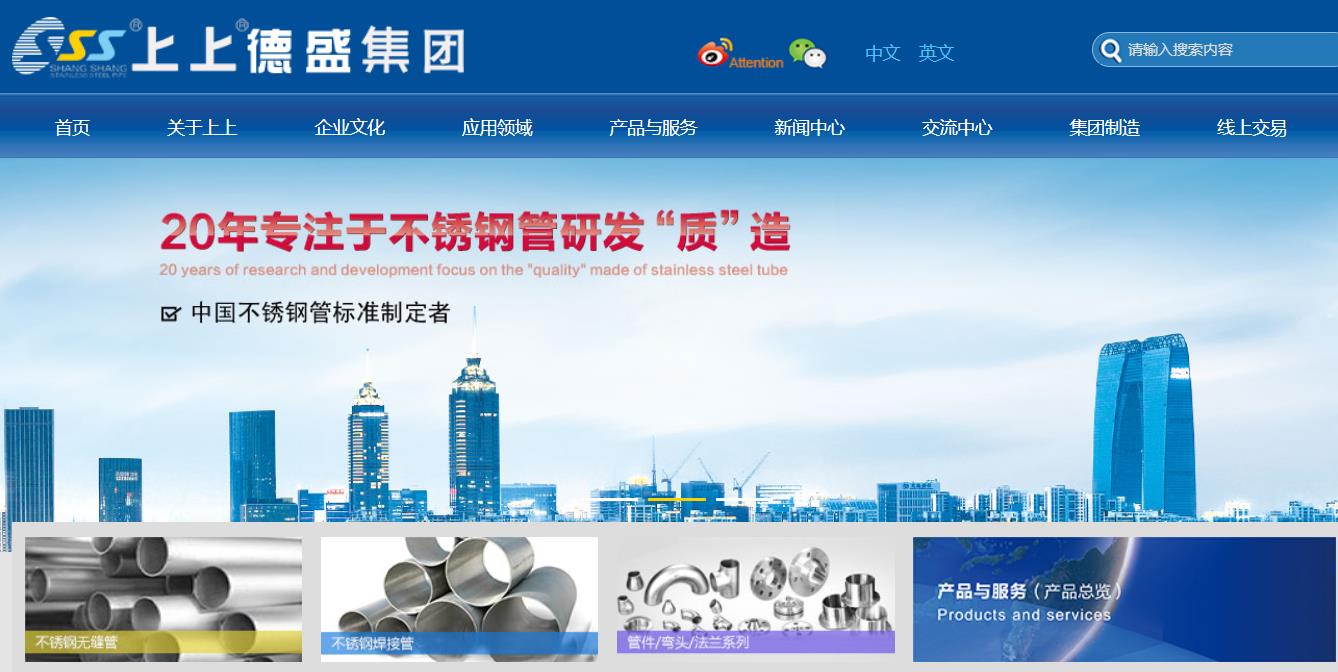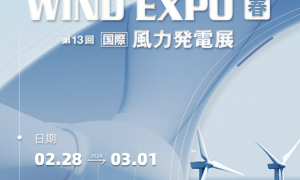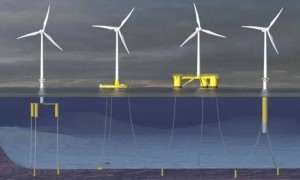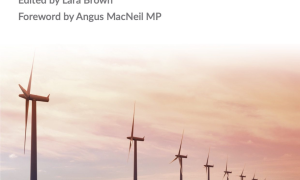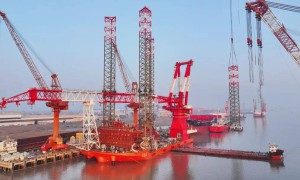行业专家齐聚克拉克森总部,在动荡时期应对挑战并探索机遇。

2024年风电制氢、制甲醇和氨产业发展上海论坛将于1月23日-24日举办
顶级造船厂和设计院购买2024年龙版中国造船厂地图,海外特制赠送图抢位
克拉克森证券(Clarksons Securities)、克拉克森海上与可再生能源公司(Clarksons Offshore & Renewables)和绿色长颈鹿咨询公司(Green Giraffe Advisory)在伦敦克拉克森总部联合举办了“海上风电投资:注意差距”研讨会。该活动汇集了包括投资者、开发商和供应商在内的主要利益相关者,为海上风电行业的当前格局提供宝贵的见解。
在可再生能源投资者充满不确定性的夏季,本次研讨会通过提供全面的分析和讨论应对挑战的策略,成为希望的灯塔。
本次会议的中心主题围绕着拥抱海上风电行业“差距”的想法,重点是在投资回报、行业创新和稳定供应链方面取得长期积极成果。该小组包括知名的行业人士,如开发商BlueFloat Energy、PE基金(开发商)和North Star Renewables所有者Partners Group,以及地基制造商Sif Group。
小组讨论,包括来自Clarksons、Sif、Partners Group、BlueFloat Energy和Green Giraffe的代表
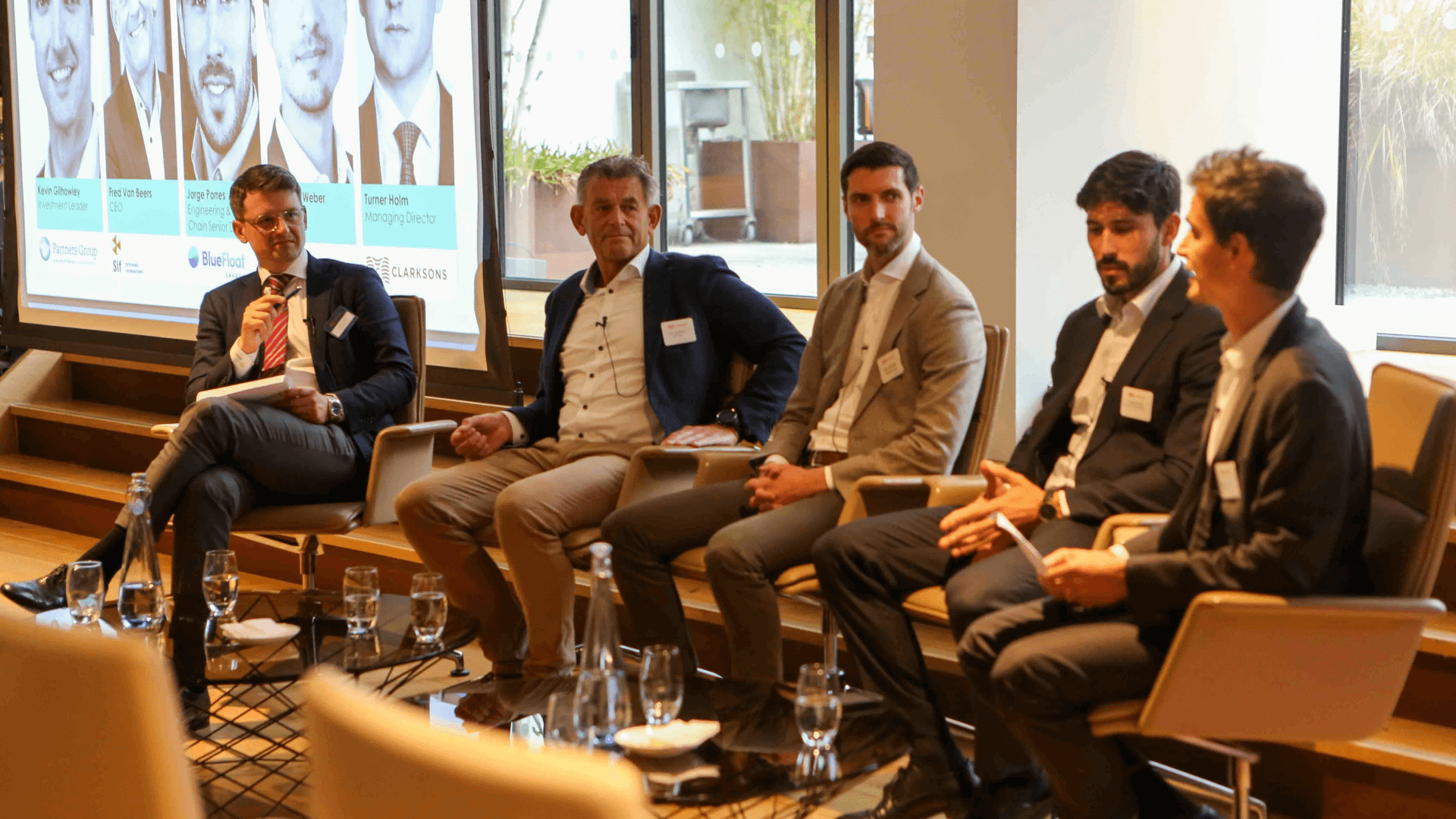
摘要
尽管最近海上风电行业面临挑战和负面新闻,但研讨会为投资如何帮助解决供需瓶颈、促进创新和确保更现实的电价提供了令人鼓舞的前景。开发商、投资者和供应链利益相关者的普遍情绪是乐观的,他们认为当前的挫折是暂时的和可以克服的。行业资深人士认识到,挫折并不少见,而且以前已经克服过。
最近,欧盟修订了其可再生能源指令(RED),要求成员国到2030年将可再生能源在其总消费中的份额提高到42.5%。这似乎非常雄心勃勃,并且通过修订RED提高了目标。然而,欧盟有可能实现这一目标。下图显示了欧洲一次能源消费中化石燃料和非化石燃料的分布情况。请注意,该图表着眼于整个欧洲,而 RED 自然只针对欧盟成员国。在欧洲,截至 2022 年,29% 的一次能源消费是非化石能源,而 71% 是化石能源。请注意,“非化石能源”和“可再生能源”之间也存在一些细微差别,因为可再生能源是由欧盟的RED定义的(以下非化石能源自然包括核能、水电等)。
克拉克森认为,底线是:
- 这些目标实际上是可以实现的。
- 要做到这一点,到2030年,需要对可再生能源进行大量额外投资,主要是太阳能和风能。

研讨会提供了几个关键要点
第一节 海上风电蓬勃发展 – 光明的未来
海上风能远不止是一个概念;它不仅可行,而且有望大幅增长。市场的最新发展,包括 Orsted 在美国的努力、Vattenfall 在英国的举措、Equinor 在挪威的合资企业以及最新的差价合约 (CfD) 第 5 轮,引发了对该行业长期前景的极大兴趣和辩论。必须强调的是,海上风电的未来仍然充满希望。
质疑该行业长期生存能力的怀疑者需要明白,海上风电在未来几十年内必须发挥关键作用,以实现2050年可持续和可再生能源格局的目标。有几个令人信服的理由支持这一前景:
第二节 海上风电供应链重塑动态
海上风电供应链目前正处于一个独特的时刻,当前的动态预示着行业结构的转变。多年来,开发人员占据了上风,类似于互联网的早期,他们的重点是占领市场份额,甚至不惜以牺牲盈利能力为代价。这种激烈的竞争推动了在最终投资决策 (FID) 之前获得授权的竞赛,导致平准化能源成本 (LCOE) 迅速下降,但也挤压了利润率。这种不幸的模式导致一些公司面临令人失望的财务业绩,甚至破产。现在,潮流已经转变,在市场的各个方面,正在开发的可观吉瓦(GW)与供应链的实际交付能力之间存在着明显的差距。这种不平衡大大增强了承包商和供应商的议价能力。
市场格局的这种转变表现在几个方面:
- 合同价格上涨:合同价格飙升,大大超过了与原材料和劳动力成本相关的短期通胀率。
- 对承包商友好的条款:承包商现在享有更优惠的合同条款,提高了他们的地位,并为更公平和协作的商业环境做出了贡献。
- 延长预订时间:承包商正在确保更长的预订时间,使他们能够与最佳项目保持一致。这反过来又为承包商和整个行业提供了更大的可见性和稳定性。
重要的是,这种转变并不能否定供应链面临的挑战。相反,它强调了这些挑战向开发人员的转移,这最终将影响消费者。在此过程中,它有助于恢复各个层面的盈利能力,同时保持行业内的竞争力。
“这种动态的重定向标志着海上风电行业的成熟及其更有效地驾驭障碍和复杂性的能力,最终为所有利益相关者带来双赢的局面。”
Frederik C. Andersen

可再生能源董事总经理 联系可再生能源团队
第三节 把握海上风电供应链投资机遇
鉴于海上风电行业不断变化的动态,供应链投资出现了一个非凡的机会。这一时刻意义重大,有几个令人信服的原因:
解决瓶颈:供应链目前是海上风电行业的瓶颈。通过投资这一关键领域,我们可以减轻开发商的压力,减轻价格压力,并确保我们经济的这一关键部门能够蓬勃发展。
有希望的回报:投资于供应链、弥合当前的差距和简化运营提供了可观和可持续回报的前景。这项工作包括众多子细分市场,包括港口、电网、电缆、涡轮机、地基等。这些细分市场中的每一个都有其独特的复杂性和细微差别,为行业的多面性做出了贡献。
创新是核心:创新不仅是驱动力,也是海上风电供应链的核心。
“投资者,尤其是那些对高风险感到满意并期望获得更高回报的投资者,将在行业的新领域中发现机会。
Turner Holm

投资银行部董事总经理 联系投资银行团队
结论:迈向光明的海上风电未来
海上风电行业正处于一个关键时刻,无数的挑战和机遇决定了其前进的道路。正如我们的讨论所强调的,有一系列解决方案可用于确保海上风电充满活力和可持续的未来。
- 政府的角色:政府在海上风电行业的未来中发挥着举足轻重的作用。预计他们将主动重新评估和重新调整海上风电装机容量的招标。这一调整不仅影响了定价,还塑造了监管框架,营造了有利于海上风电发展的环境。
- 高效的拍卖机制:为了确保行业的效率和活力,维持差价合约 (CfD) 和上网电价 (FIT) 拍卖至关重要。然而,通过消除不必要的价格上限、实施全面指数化以及缩短拍卖结果与施工之间的时间来完善这些机制,可以提高其有效性和行业的弹性。
- 长期规划:在每个参与国制定强有力的长期计划至关重要。这些计划应提供明确的路线图,概述2030年、2035年和2040年的目标,指定拍卖容量,并定义透明的招标规则。我们认为,2030年以后的清晰度尤为关键。这种方法确保了海上风电行业的长期可见性和稳定性。
- 支持供应链:供应链是海上风电领域的关键。为了缓解利润压力,吸引更多投资,稳定量产,确保项目及时交付,支持供应链的融资和发展势在必行。
- 通货膨胀和成本稳定:预计通货膨胀率下降,尤其是材料成本下降,对海上风电行业来说是一个积极的信号。该行业已经见证了成本从峰值的大幅降低,为更稳定的成本环境做出了贡献。此外,对利率下降的预期进一步增强了该行业的成本稳定性。
总而言之,海上风电行业不仅具有弹性,而且有望实现显着增长。通过实施这些解决方案并应对挑战,该行业可以巩固其作为可持续能源未来希望灯塔的地位。海上风电仍然是全球向清洁能源过渡的关键贡献者,这些战略将为其持续成功铺平道路。通过创新、协作和战略规划,海上风电将在不断变化的挑战中继续蓬勃发展。
注:本文所表达的观点、信念和观点并不一定反映 offshoreWIND.biz 的观点
Clarksons Seminar Shares Positive Prospects for the Offshore Wind Industry
- CONTRIBUTION
October 20, 2023, posted by Admir Cavalic
Industry experts convene at Clarksons HQ to address challenges and explore opportunities amid turbulent times.

Clarksons Securities, Clarksons Offshore & Renewables, and Green Giraffe Advisory jointly hosted the “Offshore Wind Investment: Mind The Gap” seminar at Clarksons’ headquarters in London. The event brought together key stakeholders, including investors, developers, and suppliers, to provide valuable insights into the offshore wind industry’s current landscape.
Amidst a summer characterized by uncertainty for renewable energy investors, this seminar served as a beacon of hope by offering a comprehensive analysis and discussing strategies to navigate the challenges.
The session’s central theme revolved around the idea of embracing “the gap” in the offshore wind sector, with a focus on achieving long-term positive results for return on investments, sector innovation, and stabilizing the supply chain. The panel included prominent industry figures, such as developer BlueFloat Energy, PE fund (developer) and North Star Renewables owner Partners Group, and foundation manufacturer Sif Group.
Panel discussion including representatives from Clarksons, Sif, Partners Group, BlueFloat Energy and Green Giraffe

Executive Summary
Despite the challenges and negative headlines that have clouded the offshore wind industry recently, the seminar provided an encouraging outlook on how investment can help unlock supply/demand bottlenecks, promote innovation, and ensure more realistic electricity prices. The prevailing sentiment among developers, investors, and supply chain stakeholders is one of optimism, with the belief that the current setbacks are temporary and surmountable. Industry veterans recognize that setbacks are not uncommon and have been overcome before.
Recently, the EU revised its Renewable Energy Directive (RED), requiring member states to lift the share of Renewable energy in their overall consumption to 42.5% by 2030. This seems very ambitions, and targets have been raised through the revision of the RED. The EU can however potentially reach this target. The graph below displays split between fossil and non-fossil fuels in Europe’s primary energy consumption. Please note that the graph is looking at all of Europe, whereas RED naturally addresses EU member states only. In Europe, as of 2022, 29% of primary energy consumption was non-fossil, while 71% was fossil. Note that there are also some nuances between “non-fossil” and “renewables”, as renewables is defined by EU’s RED (non-fossil below naturally includes nuclear, hydro etc.)
The bottom line as Clarksons sees it:
- These targets can actually be reached.
- To do so will require massive additional investments into Renewables by 2030, predominantly solar and wind.

The seminar offered several key takeaways
Section 1: Offshore Wind is Thriving – A Bright Future Ahead
Offshore wind energy is far from being a mere concept; it is not only viable but poised for substantial growth. Recent developments in the market, including Orsted’s endeavors in the US, Vattenfall’s initiatives in the UK, Equinor’s ventures in Norway, and the latest Contracts for Difference (CfD) round 5, have sparked significant interest and debate regarding the long-term prospects of the sector. It’s essential to emphasize that the future of offshore wind is still promising.
The doubters questioning the sector’s long-term viability need to understand that offshore wind will have to play a pivotal role in the next few decades to achieving the 2050 targets for a sustainable and renewable energy landscape. Several compelling reasons support this outlook:
Section 2: Offshore Wind Supply Chain Reshapes Dynamics
The offshore wind supply chain is currently at a unique juncture, and the prevailing dynamics signal a transformation in the industry’s structure. For years, developers held the upper hand, akin to the early days of the Internet, where their focus was on capturing market share, even at the expense of profitability. This intense competition drove a race to secure mandates just before Final Investment Decisions (FID), leading to a rapid decline in Levelized Cost of Energy (LCOE) but also squeezing profit margins. This unfortunate pattern resulted in some companies facing disappointing financial outcomes and even bankruptcy. The tide has now turned, and in every facet of the market, a conspicuous gap has emerged between the considerable gigawatts (GW) under development – even after factoring in project cancellations and delays – and the actual capacity of the supply chain to deliver. This imbalance has considerably strengthened the bargaining power of contractors and suppliers.
This shift in the market landscape manifests itself in several ways:
- Higher Contract Prices: Contract prices have surged, significantly exceeding short-term inflation rates related to raw materials and labour costs.
- Contractor-Friendly Terms: Contractors now enjoy more favourable contract terms, enhancing their position and contributing to a more equitable and collaborative business environment.
- Extended Reservation Times: Contractors are securing reservations over more extended periods, enabling them to align with the best projects. This, in turn, provides greater visibility and stability for contractors and the industry as a whole.
Importantly, this transformation does not negate the challenges the supply chain faces. Instead, it highlights a shift of these challenges back to the developers, which will eventually affect consumers. In this process, it serves to restore profitability at all levels while maintaining competitiveness within the sector.
“This redirection of dynamics signifies the offshore wind industry’s maturation and its ability to navigate hurdles and complexities more effectively, ultimately resulting in a win-win situation for all stakeholders.”
Frederik C. Andersen

Managing Director, Renewables
Contact the Renewables team
Section 3: Seizing Investment Opportunities in the Offshore Wind Supply Chain
In light of the evolving dynamics within the offshore wind industry, a remarkable opportunity has arisen for investments in the supply chain. This moment is significant for several compelling reasons:
Unlocking Bottlenecks: The supply chain currently stands as a bottleneck in the offshore wind industry. By investing in this crucial area, we can alleviate the strain on developers, reduce price pressures, and ensure that this pivotal sector for our economy can thrive.
Promising Returns: Investing in the supply chain, bridging the current gap, and streamlining operations offers the prospect of substantial and sustainable returns. This endeavour encompasses a multitude of sub-segments, including ports, grids, cables, turbines, foundations, and more. Each of these sub-segments has its unique set of intricacies and nuances, contributing to the industry’s multifaceted landscape.
Innovation at the Core: Innovation is not only a driving force but also at the core of the offshore wind supply chain.
“Investors, especially those comfortable with higher risks and expecting higher returns, will uncover opportunities within the newer segments of the industry.”
Turner Holm

Managing Director, Investment Banking
Contact Investment Banking Team
Conclusion: Navigating Towards a Bright Offshore Wind Future
The offshore wind industry finds itself at a pivotal juncture, with a myriad of challenges and opportunities defining its path forward. As our discussion has highlighted, a spectrum of solutions is available to secure a vibrant and sustainable future for offshore wind.
- Government’s Role: Governments hold a pivotal role in the offshore wind industry’s future. It’s expected that they will proactively reassess and realign tenders for offshore wind capacity. This adjustment not only influences pricing but also shapes the regulatory framework, fostering an environment conducive to offshore wind development.
- Efficient Auction Mechanisms: To ensure the industry’s efficiency and vitality, it’s crucial to maintain Contracts for Difference (CfD) and Feed-in Tariff (FIT) auctions. However, refining these mechanisms by eliminating unnecessary price caps, implementing full indexing, and shortening the period between auction results and construction can enhance their effectiveness and the industry’s resilience.
- Long-Term Planning: Establishing robust, long-term plans in every participating country is essential. These plans should provide a clear roadmap, outlining objectives for 2030, 2035, and 2040, specifying the capacity to be auctioned, and defining transparent tender rules. Clarity beyond 2030 is especially key, in our view. This approach ensures long-term visibility and stability for the offshore wind industry.
- Supporting the Supply Chain: The supply chain is a linchpin in the offshore wind sector. To alleviate pressure on their margins, attract more investment, stabilize mass production, and ensure the timely delivery of projects, supporting the finance and development of the supply chain is imperative.
- Inflation and Cost Stability: Anticipating a decline in inflation, especially in the cost of materials, is a positive sign for the offshore wind industry. The industry has already witnessed significant reductions from peak costs, contributing to a more stable cost environment. Moreover, expectations of decreasing interest rates further enhance the industry’s cost stability.
In summary, the offshore wind industry is not only resilient but poised for significant growth. By implementing these solutions and navigating through the challenges, the industry can fortify its position as a beacon of hope for a sustainable energy future. Offshore wind remains a crucial contributor to the global transition to cleaner energy sources, and these strategies will pave the way for its continued success. With innovation, collaboration, and strategic planning, offshore wind will continue to thrive in the face of evolving challenges.




